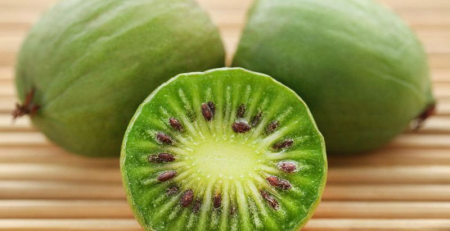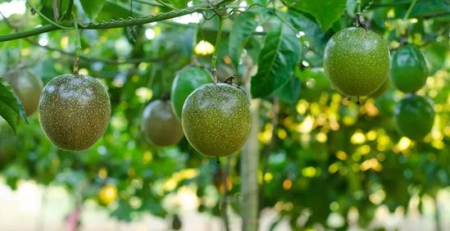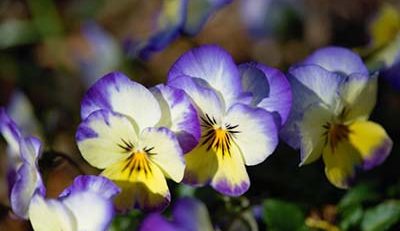Will Tulips Rebloom? A Complete Guide
Introduction
Tulips are known for their beautiful, vibrant blooms that bring a burst of color each spring. However, many gardeners wonder, will tulips rebloom? Unlike some perennials, tulips are notorious for being less reliable when it comes to reblooming year after year. In this guide, we’ll explore whether tulips can rebloom, what factors influence their ability to return, and tips to increase the chances of a recurring tulip display.
Do Tulips Naturally Rebloom?
In their native environments, tulips grow as wildflowers, and many varieties naturally rebloom annually. However, in garden settings, tulips often struggle to rebloom consistently due to several factors, including climate, soil conditions, and bulb health. Many modern tulip varieties are bred for one spectacular bloom season, with some requiring extra care to rebloom.
Will tulips rebloom without intervention? Often, the answer depends on the type of tulip and the conditions in your garden. Some gardeners choose to replant tulip bulbs each year to ensure a full display, while others invest in care techniques to improve the chances of their tulips returning.
For those curious about other plants with unique blooming patterns, check out our guide on how often do tulips bloom to discover the ideal timing and conditions for tulips to thrive and rebloom.

Types of Tulips and Their Reblooming Potential
Different tulip types have varying potentials for reblooming. Choosing the right type can improve the odds of enjoying tulip blooms for more than one season:
- Darwin Hybrids: Known for their large blooms and long-lasting color, Darwin hybrids are more likely to rebloom than other varieties. These tulips often produce strong bulbs that can return for several years with proper care.
- Species Tulips: Species tulips, such as Tulipa tarda and Tulipa clusiana, are closer to wild tulips and are more reliable rebloomers. These smaller tulips are hardy and can naturalize in garden beds, increasing their chances of returning each spring.
- Triumph Tulips: Triumph tulips are a popular choice for their vibrant colors and sturdy stems, but they may not reliably rebloom without specific care. Many gardeners treat these tulips as annuals, replanting new bulbs each year.
If you’re curious about how other plants bloom and rebloom, check out our article on when do morning glories bloom for insights into maximizing flower displays.
Factors That Affect Tulip Reblooming
Several key factors influence whether tulips will rebloom in your garden:
Climate and Winter Chill
Tulips require a period of cold dormancy to trigger their blooming process. For most varieties, temperatures need to remain below 50°F (10°C) for several weeks. In warmer climates, tulips may not receive the chilling they need, reducing their chances of reblooming. In these regions, consider pre-chilling bulbs before planting to mimic winter conditions.
Soil Quality
Healthy, well-draining soil is essential for tulip bulbs to survive the growing season and store enough nutrients to rebloom. Avoid heavy, compacted soil, as it can lead to rot. Adding organic matter, like compost or worm castings, helps improve soil quality, providing tulip bulbs with the nutrients they need to recharge.
Sunlight Exposure
Tulips need full sunlight to produce strong blooms and recharge the bulbs. Aim for at least six hours of direct sunlight daily during the growing season. If your tulips are shaded, they may struggle to store energy, affecting their ability to return the following season. Learn more about sun-loving plants in our guide on what plants like direct sunlight.
Proper Planting Depth
Planting tulip bulbs at the correct depth is crucial for their health and longevity. Bulbs planted too shallowly are vulnerable to temperature changes, which can affect blooming. A planting depth of 6-8 inches helps protect bulbs from temperature fluctuations, pests, and potential weather damage.
Techniques to Encourage Tulip Reblooming
Although tulips are not as reliable as some perennials, several techniques can encourage them to rebloom:
Deadheading Spent Blooms
Once tulip flowers have faded, it’s essential to deadhead the blooms to prevent the plant from focusing energy on seed production. Cut off the spent flower heads but leave the foliage intact, as this allows the plant to photosynthesize and store energy in the bulb. For additional tips on deadheading, see our guide on how to cut tulips so they regrow to extend the life of your tulip display.
Allow Foliage to Die Back Naturally
One of the most critical steps in encouraging tulip reblooming is allowing the foliage to die back naturally. After the flowers have faded, the leaves continue to photosynthesize, sending energy back into the bulb for next year’s growth. Cutting the foliage too early can weaken the bulb, reducing its chances of returning the following season.
Fertilize After Blooming
Tulips benefit from a light application of balanced fertilizer after blooming. This provides essential nutrients to the bulb as it recharges. Avoid high-nitrogen fertilizers, as these can encourage leaf growth at the expense of blooms. Using natural fertilizers, such as worm castings, can help boost bulb health without harming the environment.
Digging and Storing Bulbs
In warmer climates or areas where tulips don’t receive adequate winter chill, consider digging up the bulbs after the foliage has died back. Store them in a cool, dry place until the fall planting season. This process, known as “lifting,” can increase the likelihood of tulips reblooming by ensuring they experience the cold dormancy they need.
Alternatives to Reblooming Tulips
For gardeners who prefer a low-maintenance approach, treating tulips as annuals is a practical solution. Planting fresh bulbs each fall simplifies the process and ensures a full, vibrant display without the need for extra reblooming techniques. This method also allows you to experiment with different tulip varieties each season, adding new colors and styles to your garden while keeping it visually engaging. Pairing tulips with other spring flowers, such as cauliflower companion plants or early-blooming perennials, can enhance the garden’s aesthetic, providing a continuous show of color even as the tulips begin to fade.
Other alternatives include planting hardy bulbs that are known to naturalize, such as daffodils or crocuses, which tend to rebloom each year with minimal care. These types of bulbs mix well with tulips in a garden bed, creating a layered, long-lasting display of blooms. Some gardeners also opt for indoor window plants to enjoy flowering plants inside, maintaining a similar vibrant atmosphere year-round. Combining tulips with these complementary plants adds depth and dimension to your garden while offering a hassle-free solution for those who want beautiful blooms without extensive upkeep.
Lifespan of Tulip Bulbs in the Garden
Under ideal conditions, tulip bulbs can thrive and bloom for several years, bringing vibrant color to your garden each spring. However, as tulip bulbs age, they may start to produce fewer flowers, and the blooms might lose some of their vigor. Over time, tulips can also become more susceptible to diseases and environmental stressors, which may impact their ability to rebloom. Replacing older bulbs every few years is a simple yet effective way to maintain a fresh, lush look in your tulip beds, ensuring consistent and robust blooms year after year.
If you’re interested in adding more variety to your tulip garden, consider planting flowers that complement tulips and extend the bloom season. For inspiration, check out our guide on flowers that look like tulips to discover beautiful alternatives that pair well with tulips and enhance the overall aesthetic of your garden. Combining tulips with other spring-blooming bulbs and perennials can create a layered effect, enriching your garden’s color palette and bringing added interest to each flowering season.
Why Some Gardeners Treat Tulips as Annuals
Many gardeners choose to treat tulips as annuals, especially for hybrid varieties that may not reliably return. Planting new bulbs each year ensures a full display without worrying about reblooming. For those interested in maintaining a lush garden with different types of flowers, our guide on when to separate seedlings offers additional tips on timing and replanting practices for other blooms.
Varieties That Are More Likely to Rebloom
Certain tulip varieties have a higher potential to rebloom in the right conditions. Species tulips, for example, are known for their resilience and naturalizing ability. Some popular varieties for reblooming include:
- Tulipa sylvestris: Also known as the Woodland Tulip, this variety is smaller and more likely to rebloom year after year.
- Tulipa tarda: This star-shaped tulip is often found naturalizing in gardens and is well-suited to reblooming.
- Tulipa clusiana: Known as the Lady Tulip, this variety has delicate, narrow petals and reblooms well in sunny garden beds.
These species tulips are often more reliable than hybrids, making them a good choice for gardeners hoping for a perennial tulip display.

Conclusion
So, will tulips rebloom? While tulips can rebloom under the right conditions, they are often unpredictable in garden settings. By choosing reliable varieties, providing proper care, and utilizing techniques like deadheading and bulb lifting, you can improve your chances of enjoying a reblooming tulip display. However, for guaranteed color each spring, replanting bulbs annually may be the simplest option.
Whether you aim to nurture reblooming tulips or prefer a fresh display each year, these beautiful flowers bring timeless elegance to any garden. With a little planning and care, tulips can continue to brighten your garden and provide a cheerful start to each spring.
For additional tips on enhancing your flower garden, explore our guide on how often do tulips bloom to learn more about the timing and care needed for vibrant tulip displays each season.













Leave a Reply